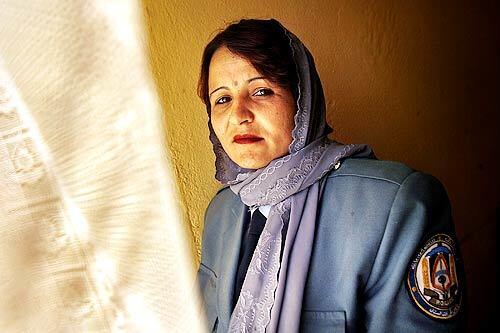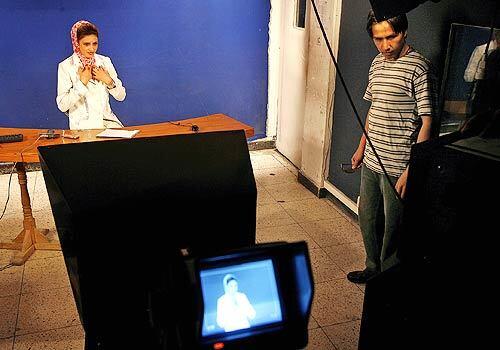
Farsona Simimi adjusts her head scarf before doing a broadcast for Afghanistan’s Tolo television network in Kabul, where she was the first woman on the network since the fall of the Taliban. Her husband grows concerned when he sees what he thinks is too much hair showing from her scarf. “My husband supports me and he watches the TV but sometimes when my scarf goes a little (far) back he tells me, ‘your scarf went very (far) back, next time try to bring it ahead and cover your hair,’” said Simimi. (Rick Loomis / LAT)
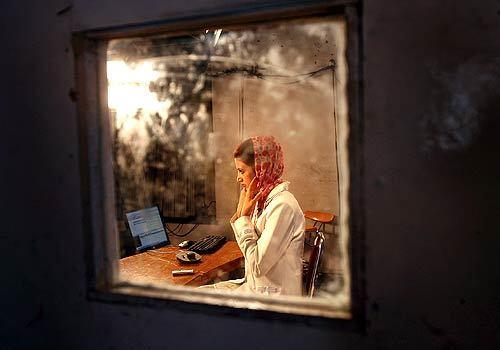
On air, Simimi uses the non-threatening idiom of shows such as Bride, and Happy Morning to help women think about asserting their rights and to help men understand the problems women face. She often alternates taboo topics with ones that even the most conservative men would not oppose. (Rick Loomis / LAT)
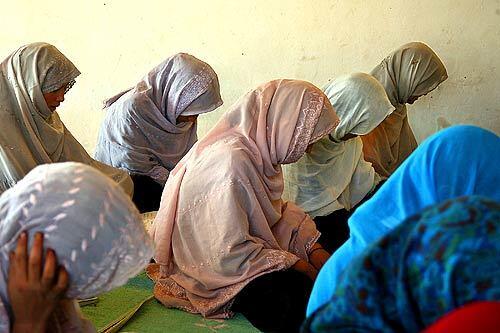
Young girls sit in a separate classroom inside the Shahid Ahmadi School in Afghanistan’s Ghazni Province. The school, which was partly burned in one of many attacks that have targeted schools, has six classrooms and also has to teach some of its 360 students outside because of a lack of space. (Rick Loomis / LAT)
Advertisement
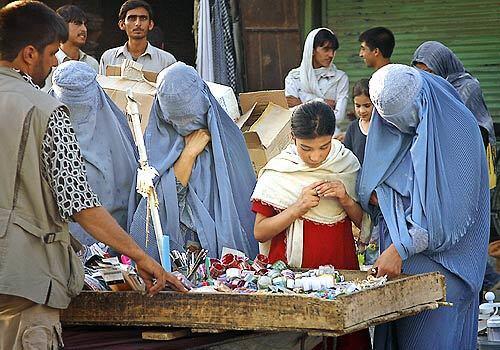
Women clad in burkas shop at Kabul’s main market area. The majority of women in the country remain covered from head to toe while in public areas but feel more free to remove the controverisal clothing item when the enter buildings, homes or more private spaces. (Rick Loomis / LAT)
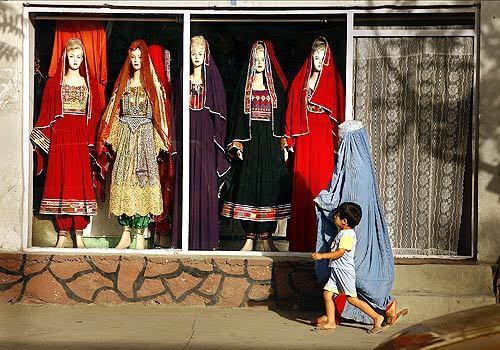
A woman wearing a burka leads a child past a shop in Kabul, where images of women have become more prevalent since the fall of the Taliban. (Rick Loomis / LAT)
